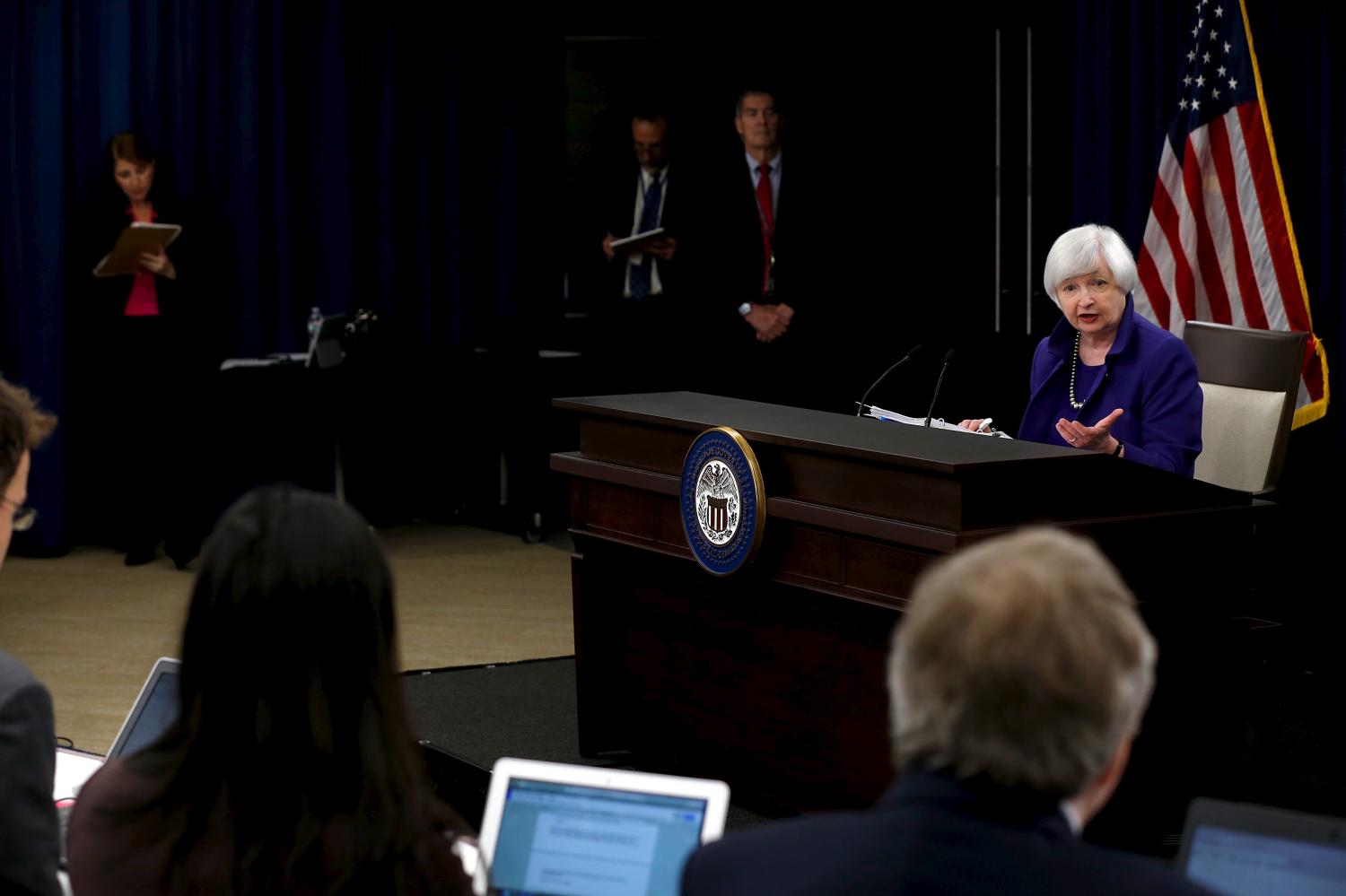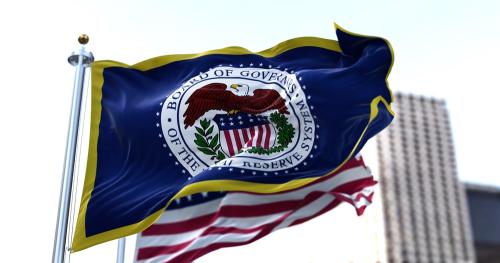What We Did, and Why
Federal Reserve communication has come a long way since the early ‘90s, when the Fed was so tight-lipped it did not even announce interest rate changes. Now, members of the Federal Open Market Committee (FOMC) publicly project their views on interest rates years into the future, the end-of-meeting statements the FOMC has been issuing since 1994 have grown longer in length and more detailed in substance, and the Fed Chair fields questions from the press on live TV four times a year.
With this openness has come criticism. Some, such as former Fed Governor Kevin Warsh, believe the current system is chaotic and that the Fed “licenses a cacophony of communications in the name of transparency.” Others think the Fed could talk more. Narayana Kocherlakota, former president of the Federal Reserve Bank of Minneapolis, recently suggested the Fed hold “a press conference after every FOMC meeting, as the European Central Bank does.”
To see what some of the main targets of Fed communications think about all this, the Hutchins Center on Fiscal and Monetary Policy at Brookings conducted a survey of academic and private-sector Fed watchers.1
What We Found
1. The Fed’s communication efforts receive a passing grade, but few think they deserve an A.
Asked to give the Fed’s current communications an overall grade, the median respondent gave it a B- with over half (53%) of all responses in the B range (between B- and B+), and more than a quarter (28%) in the C range. Only seven percent gave the Fed an A or A- and 12 percent gave it a D+, D, or F.
2. Academics are more positive about Fed communications than private-sector Fed watchers.
79% of academics gave the Fed a grade of B- or better, whereas only 47% of private-sector Fed watchers did. The median grade from academics was a B and from the private-sector Fed watchers, a C+.
3. The Fed Chair should talk more, and Reserve Bank Presidents should talk less.
About half (51%) of the respondents said the Chair should talk more; only 18% said the Chair should talk less. By contrast, nearly two-thirds (64%) said the Reserve Bank Presidents should talk less; only four percent thought they should talk more. As one respondent put it: “Everyone except the Chair, keep quiet. You are only giving conflicting signals.” Said another: “Too many people spouting off their views in in-person interviews…Shut up the showboaters!”
4. The FOMC post-meeting statement, speeches by the Chair, and quarterly press conferences are viewed as the most useful communications tools.
Here’s how the various tools rank in terms the proportion of that respondents ranked them as “useful” or “extremely useful:”
- FOMC post-meeting statement (59%)
- Speeches by the Chair (59%)
- Chair’s quarterly press conference (54%)
- Summary of Economic Projections (excluding the projections of short-term interest rates known as “the dots”) (47%)
- Governors’ speeches (38%)
- Congressional testimony by the Chair (38%)
- Summary of Economic Projections’ dots (33%)
- Speeches by bank presidents (24%)
- Fed’s semi-annual written report to Congress (17%)
- News coverage of the Fed (16%)
Academics were much more positive about the post-meeting statement than the private-sector Fed watchers: All of the academics found it was “somewhat useful” or better, whereas 76% of the private-sector Fed watchers did. In the open-ended response section, several people suggested press conferences be held after each meeting of the Federal Open Market Committee (FOMC). They are currently held quarterly.
5. Private-sector Fed watchers find the Summary of Economic Projection’s “dots” charts more useful than academics, but 1/3 of all respondents could do without them.
While a third thought the dots were “useful” or “extremely useful” (33%), the others thought they were “somewhat useful” (29%) and “not very useful” or “useless” (38%). Academics found most channels of Fed communications more useful than private-sector Fed watchers, but not in the case of the dots: 38% of private-sector Fed watchers thought the dots were “useful” or “extremely useful,” while only 25% of academics did.
Among those Fed watchers who wanted to keep the dots, several suggested changes to their presentation, including identifying each Fed official’s projection, requiring uniform economic assumptions for the projections chart, identifying which dots represent views of members of the FOMC who are currently voting2, color-coding the dots so trajectories are apparent, and connecting individuals’ interest-rate projections with their projections for the economy.
6. The majority of respondents do not think the Fed’s reaction function is clear.
Only a third (34%) of those surveyed said they had a “very clear” or “mostly clear” grasp of the Fed’s reaction function, the way the Fed anticipates responding to changes in the economic outlook. Several frustrated respondents argued the Fed’s actions were not consistent with its messaging. Others were more sympathetic. Said one: “It’s a multi-variable equation with varying parameters. There will be confusion at times.”
7. A majority of academics think Fed communications help the markets or the economy, but private sector Fed-watchers are skeptical.
There was strong disagreement about whether Fed communications helps the real economy and/or the financial markets: 35% said it helps both the markets and the economy while 42% said it helps neither. The divide fell sharply on academic/private-sector lines: 55% of academics thought Fed communications was good for both the real economy and markets while only 21% of private-sector Fed watchers thought so. About half (52%) of private-sector Fed watchers thought it helped neither.
Strikingly, academics thought the Fed’s current approach to communications was far more helpful to the markets than those in the markets said. Some 73 percent of academics said Fed communications helps the markets; only 44 percent of private-sector Fed watchers agreed.
8. Many argue the Fed focuses too much on short-term data releases and decisions.
In the free-response recommendation section, several expressed skepticism about the Fed’s description of its monetary policy as “data dependent.” One implored the Fed to “avoid this data dependent silliness,” another argued the phrase “has no meaning,” and a third called the phrase “vague and misleading.”
For a more complete look at each of the questions and responses, download the full set of survey results.
-
Footnotes
- We circulated our non-random survey to members of the NBER’s Monetary Economics program, Chicago Booth’s IGM Economic Experts Panel, Brookings’ Economic Studies Council, and those who participate in the WSJ’s monthly survey of economists, among others. We received 64 responses (out of 214 people contacted) between September 26th and October 16th, 2016, and included only those who said they follow the Fed “very closely,” or “somewhat closely,” leaving 58 observations: 24 from the “academic/think tank” world, and 34 “private-sector Fed watchers.” (The “private-sector Fed watchers” category includes seven respondents who listed their jobs as “other,” but whose titles suggested they were on the private side.) Respondents indicated they have been following the Fed in a professional capacity for an average of 24 years.
- Only five of the twelve Reserve Bank presidents can vote on the FOMC at a given time; the Federal Reserve Bank of New York has a permanent vote, and the other four spots rotate annually.





